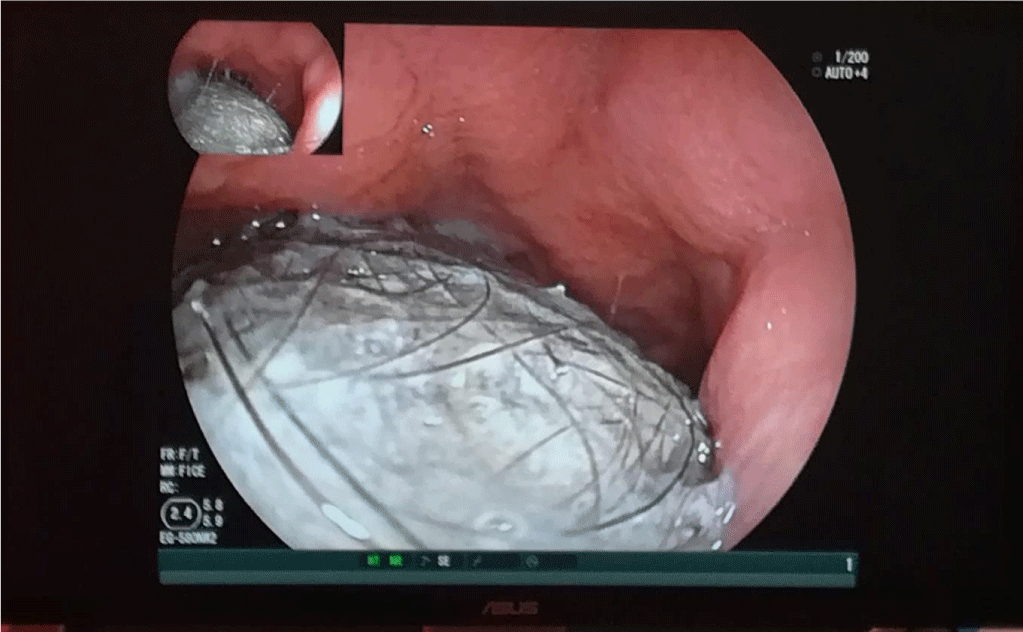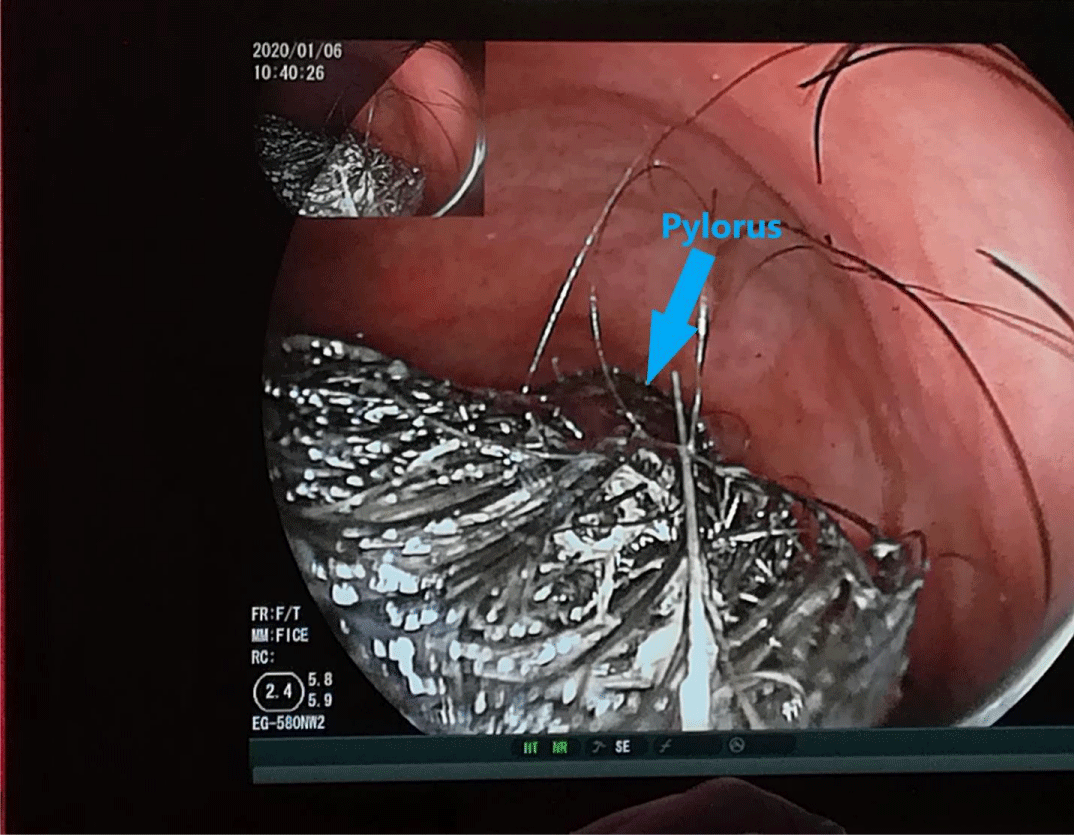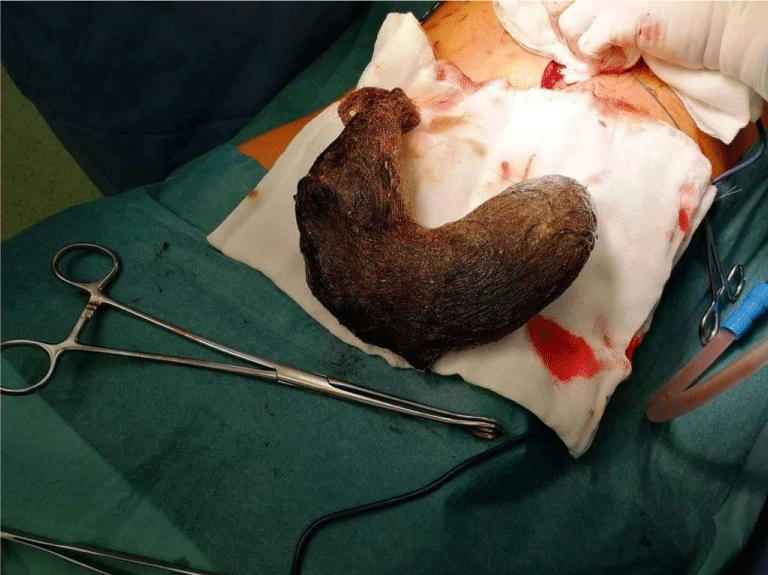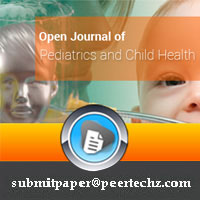Open Journal of Pediatrics and Child Health
A rare cause of chronic abdominal pain among children - A case report
Krisztina Csuzi1*, Orsolya Boda2, Robert Neumann2 and Gergely Peter Toth1
2MD, PhD, Department of Surgery, Elisabeth Hospital, Sopron, Hungary
Cite this as
Csuzi K, Boda O, Neumann R, Toth GP (2021) A rare cause of chronic abdominal pain among children - A case report. Open J Pediatr Child Health 6(1): 016-017. DOI: 10.17352/ojpch.000031Trichobezoar is a concretion of chewing and swallowing hair or any other indigestible materials that accumulate in the gastrointestinal tract. Rapunzel syndrome refers to a rare condition when a gastric trichobezoar extends into the small bowel. We describe the case of a 16-year-old female who presented with chronic abdominal pain, loss of appetite and weight loss. Based on her past medical history, trichophagia has already been revealed at preschool age. Imaging tests indicated a large filling of the stomach. Upper gastrointestinal endoscopy showed a large trichobezoar in the stomach with prolongation through the pylorus. The patient underwent exploratory laparotomy and the trichobezoar was removed. Upper gastrointestinal endoscopy is the preferred modality for diagnosis and in most cases the treatment is surgical.
Introduction
Bezoars are intraluminal accumulations of indigestible material. They have been classified into phytobezoars (comprised of vegetable and fruit residue), lactobezoares (comprised of milk residue), pharmacobezoares (comprised of pills and capsules) and trichobezoars (an accumulation of hair), according to their dominant composition [1]. Trichobezoars are common in patients with mental retardation, psychiatric disorders or personality disorders such as trichophagia and trichotillomania. Rapunzel syndrome is a rare condition when a gastric trichobezoar extends into the small bowel increasing the risk of complications such as obstruction, perforation and peritonitis [2].
Case report
A 16-year-old female was referred to our Paediatric Department with abdominal pain for two years, loss of appetite and weight loss for a month. Two years earlier the patient was treated with acute pancreatitis in another hospital. Based on her past history, trichophagia was present at preschool age.
Physical examination of her abdomen revealed a palpable firm mass in the epigastric region. The rest of the physical examination was unremarkable. Previously, she underwent the following investigations. Abdominal ultrasound showed a large-scale echogenic mass in the stomach with dense posterior acoustic shadow. Barium meal test showed intraluminal filling defect with a size of 13×5 cm.
In our Department gastroscopy took place and it revealed a huge gastric trichobezoar (Figure 1) with prolongation through the pylorus (Figure 2).
The patient underwent gastrostomy (Figure 3), with retrieval of the trichobezoar without any surgical complications. The stomach-shaped mass measured 20.0×5.0×5.0 cm (Figure 4) and had a tail of hair extending through the pylorus into the middle part of the duodenum.
Discussion
Bezoars are accumulations of indigestible foreign material in the gastrointestinal tract. According to their dominant composition there are 4 types. Trichobezoar is a concretion of chewing and swallowing hair that accumulates in the stomach and fails to pass through the intestines. If it extends into the small intestine, it is referred to as Rapunzel syndrome. The syndrome was first described by Vaughan et al. in 1968 [3].
It is a very rare entity in paediatric population, most commonly affecting women under the age of 30, mainly associated with psychiatric conditions [4].
Symptoms could include abdominal pain, loss of appetite, nausea/vomiting, and weight loss. Patients can be asymptomatic until the bezoar reaches the point of obstruction. The following complications may occur: gastric ulceration, acute pancreatitis, gastric perforation, obstructive jaundice, complete intestinal obstruction, severe peritonitis [5,6].
Small bezoars can be extracted via endoscopy using various disintegrating techniques, but in most cases a surgical management is needed because of the large size [7,8]. Routine endoscopy, ultrasonography can be used for detection of recurrence.
We have described the case of a 16-year-old female who had a history of trichophagia. The diagnosis was based on the patient’s medical history, physical examination, imaging tests and upper gastrointestinal endoscopy. The bezoar was removed by exploratory laparotomy. Rapunzel syndrome is a rare condition in paediatric population. During the differential diagnosis of chronic abdominal pain, we have to think about Rapunzel syndrome if there is a history of trichotillomania or trichophagia.
- Lowry JA, Vandover JC, DeGreeff J, Scalzo AJ (2005) Unusual presentation of iatrogenic phenytoin toxicity in a newborn. J Med Toxicol 1: 26-29. Link: https://bit.ly/2Q1ZXaG
- Mehndiratta S (2014) Pediatric dosing errors due to variable drug formulations. J Pharmacol Pharmacother 5: 254-255. Link: https://bit.ly/3uzdWne
- Mehndiratta S (2016) Phenytoin-induced encephalopathy in a child. Indian J Pharmacol 48: 460-461. Link: https://bit.ly/3wDp4S1
- Robertson K (2013) Conrad Brice von Stempel, and Ian Arnold When less is more: a case of phenytoin toxicity. BMJ Case Rep 2013.
- Sharma B, Handa R, Prakash S, Nagpal K, Gupta P (2013) Phenytoin toxicity presenting as encephalopathy with fatal outcome: A case report. J Neurol Res 3: 184-186. Link: https://bit.ly/3s0RHoP
- Su CM, Kung CT, Wang YC, Lu CH (2009) Life-threatening cardiotoxicity due to chronic oral phenytoin overdose. Neurol India 57: 200-202. Link: https://bit.ly/31YyDwA
- Craig S (2005) Phenytoin poisoning. Neurocrit Care 3: 161-170. ( McNamara JO: Pharmacotherapy of the epilepsies (Chapter 19).
- Brunton LL (2020) Goodman and Gilman’s Pharmacological Basis of Therapeutics. 11th edition. New York (NY): McGraw-Hill; P 321-338.)
- Bakr A, Belli A (2018) A systematic review of levetiracetam versus phenytoin in the prevention of late post-traumatic seizures and survey of UK neurosurgical prescribing practice of antiepileptic medication in acute traumatic brain injury. Br J Neurosurg 32: 237-244. Link: https://bit.ly/3wCDge2
Article Alerts
Subscribe to our articles alerts and stay tuned.
 This work is licensed under a Creative Commons Attribution 4.0 International License.
This work is licensed under a Creative Commons Attribution 4.0 International License.





 Save to Mendeley
Save to Mendeley
